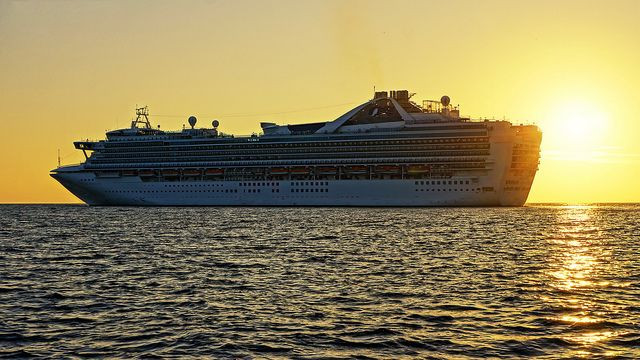Chances Of Getting Stomach Bug On A Cruise Ship Are Lower Than Ever: CDC

For those of us stuck in the middle of a cold spell and hankering for a cruise getaway, there’s good news, courtesy of the Centers For Disease Control and Prevention (CDC). It seems the chances of contracting the stomach flu, or acute gastroenteritis, while on a cruise ship are actually pretty rare, and getting rarer with time.
”Perceptions that cruise ships can be luxury breeding grounds for acute gastroenteritis outbreaks don’t hold water,” read a statement released Monday by the CDC in the Journal of the American Medical Association. The statement went on to reference a recent CDC report published in January that found only 0.18 percent of the nearly 75 million passengers who rode aboard a cruise ship from 2008 to 2014 reported the stomach flu, continuing a steady downward trend in infection rates seen since the 1990’s. For the 28 million crew members observed during the same time period, the rates are even lower, at 0.15 percent.
“Using laboratory data and records from cruise ships sailing in US jurisdiction, CDC researchers determined that shipboard cases of acute gastroenteritis have decreased, from 27.2 cases per 100,000 travel days in 2008 to 22.3 cases in 2014,” the statement read. “Among crew members, illness rates held steady at about 21 cases per 100,000 travel days, likely due to strict reporting and isolation requirements for sick ship staff.“
As mentioned, the chances of contracting a stomach bug while cruising have only declined in the past few decades. In 1990, for instance, there were a reported 29.2 cases of diarrheal disease per 100,000 travel days (in 2001, the CDC expanded its surveillance of cruise ship-related foodborne illnesses to also include other associated symptoms like vomiting and muscle aches).
The slowdown hasn’t been entirely smooth, though, with particularly large outbreaks temporarily negating the gains in disease prevention. In 2012, the emergence of a new strain of norovirus called GII.4 Sydney led to a higher toilet toll that year. Researchers were able to identify the likely culprit of 95 out of the total 133 ship outbreaks reported from 2008 to 2014. Of these, 97 percent were traced back to norovirus, most commonly the GII.4 Sydney strain.
But while norovirus remains the most prevalent foodborne illness in the U.S., the overall impact of ship-related outbreaks is miniscule, accounting for 0.1 percent of reported norovirus cases during the study period. E. coli was the second most likely source of an outbreak. Still, these outbreaks only represented about 15 percent of all ship-related cases of acute gastroenteritis.
The CDC authors of the January report credit the decline to several practical steps taken by cruise lines, including quickly isolating suspected cases, providing ample hand washing stations, and forbidding employees from touching ready-to-eat foods with their bare hands. They do stress the importance of remaining vigilant, though, even for passengers themselves.
“To further reduce acute gastroenteritis on cruise ships, travelers should practice good hand hygiene, especially after using the toilet and before touching the face or eating; persons experiencing diarrhea or vomiting should promptly report their illness for proper assessment, treatment, and monitoring,” they wrote.
Source: Cruise Ship Illness Declines. News From The Centers For Disease Control And Prevention. JAMA. 2016



























